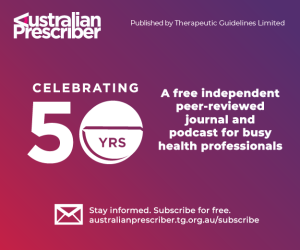Australian women are being pushed out of the workforce early due to lack of support to deal with the symptoms of menopause and perimenopause, a Senate inquiry has heard.
Giving evidence before the Community Affairs References Committee examining the issues, unions collectively called for 10 days of paid reproductive leave to be included in the National Employment Standards to support workers managing reproductive health issues such as menopause and perimenopause.
With an overwhelmingly female workforce and the average nurse aged 47, ANMF Federal Secretary Annie Butler said the union’s members not only experience the challenging symptoms and impacts of menopause and perimenopause but are also uniquely positioned to contribute to the solution through providing better education and healthcare.
Ms Butler said nurses and midwives dealing with menopause or perimenopause face increased challenges due to working across health and aged care systems that require 24/7 presence and shift work.

On top of echoing the call for 10 days reproductive leave, Ms Butler told the committee that modifying rostering practices would provide greater flexibility for nurses and midwives trying to manage their symptoms, who often quickly run out of sick leave. Implementing practical system changes would ultimately improve the workforce’s leading issue, retention, she argued.
“We would be really keen to implement a system that acknowledges the wealth of experience, skill and knowledge of those people who have been in the system for a while and are around the menopausal age,” Ms Butler said.
“We have more than 120,000 members who are in that 45-64 age bracket and we are at extreme risk of losing that wealth of experience and knowledge. If we could perhaps take a little pressure off the direct care workload, implementing formal coaching and mentoring roles, what we could see is a more relaxed situation for some of our more experienced nurses but not losing their knowledge.”
The Australian Council of Trade Unions (ACTU) says a quarter of working women are retiring early before the age of 55 due to ‘taboo’ menopause issues. According to a study commissioned by the Victorian Women’s Trust, over 80% of women experiencing menopause said their work was negatively affected, while 70% reported not feeling comfortable talking to their manager about ways to support them. Meanwhile, the Australian Institute of Superannuation Trustees estimates that menopause may cost women in the 50-54 age group more than $15 billion per year in lost earnings and superannuation for every year of early retirement.

“The impact of menopause, perimenopause and reproductive health on workers is significant yet it is still poorly understood and often a taboo topic in the workplace,” ACTU’s Work Health and Safety Policy Officer, Claire King, told the committee.
“We have growing evidence showing that poor workplace support for reproductive health issues including menopause exacerbates inequality and gender disadvantage. This leads to reduced wellbeing, lower economic participation and increased discrimination. A lack of recognition and accommodation by employers can result in decreased job satisfaction and productivity, early retirement and significant impacts on gender equality and women’s security.”
Ms King said the ACTU Congress recently passed a policy calling for three key protections for all workers experiencing reproductive issues – 10 days of paid reproductive leave, reproductive leave to be included as a reason why a worker can request flexible work arrangements and making reproductive health a protective characteristic under the Fair Work Act and anti-discrimination laws.
Representing the Australian Education Union (AEU), Natasha Wyatt, Senior Vice President NSW Teachers Federation, said as employers and funders of public education, governments have a duty of care to do more to support teachers experiencing menopause.
Ms Wyatt pointed to a recent survey of public-school principals, which found 48% of schools have an inadequate number of bathrooms, while 66% said the quality of the bathrooms were inadequate. At one school, staff toilets were converted into a teaching space, forcing teachers to use public toilets at nearby local shops.
“Far too often, teachers with troubling symptoms in menopause are forced to retire early as they work in unsupportive and unsafe conditions,” Ms Wyatt said.
“We must hold experienced teachers in the profession. The Australian Institute for Teaching and School Leadership estimate that non-retirement attrition of teachers could be above 14%.”
Giving evidence, Kate Marshall, Senior National Secretary of the Health Services Union (HSU), told the committee a survey of its NSW members revealed 30% needed time off for reproductive health reasons in the past 12 months, with 50% saying they would have accessed paid reproductive leave or flexible work arrangements if it had been available. When asked to name reasons why they would take up the supports if available, 75% of respondents listed menopause or perimenopause.
The HSU believes that the introduction of paid reproductive leave will help de-stigmatise menopause in the workplace.
“All those participants who had experienced menopause or perimenopause have indicated that they have taken time off work and have thought about retiring.”
“With high levels of understaffing within the health sector, it has never been more urgent to implement strategies, policies and industrial interventions to ensure that organisations can retain critical corporate knowledge. Any person, regardless of their reproductive health and wellbeing challenges, must be afforded the industrial right to continue with their employment with the appropriate, reasonable adjustments.”
Dee Spink, from the Australian Services Union (ASU), told the committee the push for greater reproductive health support in the workplace began several years ago and continues to grow momentum.
Earlier this year, the Queensland government announced public sector workers will be entitled to 10 days of paid reproductive leave from September for the treatment of menopause, endometriosis, IVF and other reproductive health issues.
A recent survey of ASU members about these issues found that of those who experiences menopause symptoms, 40% were impacted daily, while 84% said their symptoms affected their ability to work. More than 50% had to take personal leave to cope but 61% were not able to due to insufficient leave balances. Most concerningly, 34% of respondents said they had considered leaving the workforce due to the difficulty of managing their menopause symptoms.
“This is a huge amount of experience and potential that’s on the line if we don’t address this. For many reasons, women are already disadvantaged economically in the later years of their career and menopause should not be another. Workers should be supported through access to paid leave, flexible working arrangements and other workplace measures.”
In addition to strategies like flexible work arrangements, Ms Marshall, from the HSU, suggested more amenities be made available to allow women to manage symptoms like nausea and anxiety, such as access to cool water and fans. For teachers, Natasha Wyatt told the committee increasing the workforce would enable staff experiencing reproductive issues to take time off if needed.
Ms Butler said that ultimately, unions want to make it easier for working women to participate fairly in the workforce as they navigate natural life transitions. Added measures should include education programs for employers to better understand the effects of perimenopause and menopause and improved education for all health professionals, including within undergraduate curriculums.
“This could be a significant plank in our measures to increase women’s workforce participation and retain all of the strength, knowledge, commitment and skill we know we have from our older women workforce,” Ms Butler said.








